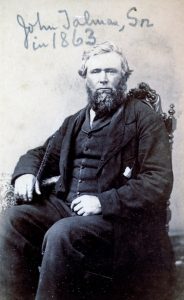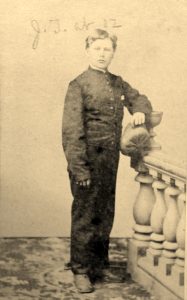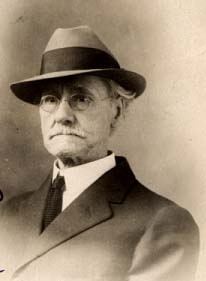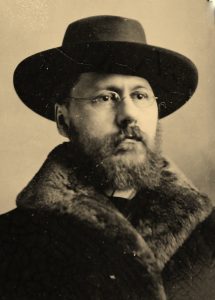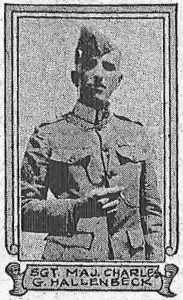From the farm he was born on, – Chestnut Ridge, Dutchess Co, to the new family farm on the Webber Road at Prendergast Creek in Chautauqua Co., NY. I believe the most probable route he took along with his 11 children in 1848 in a wagon driven by oxen to the homestead in Harmony, Chautauqua County to be the following. Most likely they traveled the “Catskill/Susquehanna Turnpike” a direct route. Even though the Erie Canal was completed by 1825 the turnpike had been finished by 1806 to Bath and extended to northwestern Pennsylvania prior to 1825.
1805-6/18: John James Tallman only son of John & Ruth Tallman is born on a farm on Chestnut Ridge, Dutchess Co., NY.
1807-3: Sarah Ann Newton “Sally” 5th of 11 children is born to David & Charlotte Newton in Dutchess Co.
1829-12/30: John & Sally are married by George Hammond Esq.
1830 ca: John James father John dies at his farm in the Town of Dover. His will leaves everything to his loving wife Ruth and only surviving son John James.
1830-4/5: John James and possibly pregnant wife purchase a 123 Ac farm in the Town of Washington, Dutchess Co. The property is next to his sister-in-law Jane Ann who is married to his cousin Solomon Tallman.
2/1/1831: Birth of son Joseph B.
1832-3/19: Birth of dau. Mary A.
1833-11/18: Birth of dau. Charlotte
1835-5/20: Birth of dau. Susan A. ‘Susie’
1837-7/5: Birth of dau. Lois A. ‘Adie’
1838-8/3: Birth of son John N.
1840-1/7: Birth of dau. Ruth
1841-3/26: Birth of son Solomon A.
1842-6/3: Birth of dau. Maria Elizabeth
1844-2/1: Birth of son Trustom C.
1845-6/6: Birth of son James H.
1845-8/3: John James mother dies on his farm. She leaves family bibles to her grandchildren: John , Mary, Susie, Adie, and Ruth.
1847-6/14: Birth of stillborn infant
1848-4/1: John James purchases a 241 ac. Farm in the Town of Harmony for $3,100 from Simeon Vail, he and his 11 children move to Chautauqua County.
1851-1/14: John sells his 123 ac. Farm in Dutchess County.
1851-2/6: daughter Mary marries John Losee in the Village of Panama, Chautauqua Co.
1852-3/23: John files a Judgment against Egburt Sheldon & John Penman for an unpaid $823.15 promissory note.
1852-7/5: son Joseph graduates from Albany Normal School, Albany NY.
1854 ca.: John suffers a debilitating leg injury.
1856 ca.: daughter Charlotte graduates from Poughkeepsie Female Collegiate College and teaches in Poughkeepsie until about 1870 living with aunt Jane Ann Newton.
1856-11/29: He purchases daughter Mary and John Losee’s farm to the south for $3150, they continue to farm there. (It remains a mystery to why he purchased it and for such an exorbitant price?)
1857-6/15: John’s wife Sarah “Sally” Ann age 50 dies at her sister Jane Ann’s home in Dutchess County. She’s buried in Chestnut Ridge Friends Ground a cemetery abandoned before 1900. 39 others including a few of her of relatives are also buried there.
1858-9/1: His son Joseph files papers declaring him a habitual drunkard and lunatic trying to gain control of his farm.
1858-9/15: The Court appoints a commission of inquiry into it.
1858-9/22: The Court rules in favor of John, throws the case out.
1859-11/29: Alonzo Marsh files a Judgment against John for an unpaid $64.25 promissory note.
1861-4/12: The Civil War breaks out with the attack of Fort Sumter.
1861-6: son Joseph, his wife Julia from Ohio whom he married before 1860 and younger brother Solomon move to Austin, MN.
1861-6/27: Henry VanVolkenburg files a Judgment against John for an unpaid $300 promissory note.
1861-10/21: Solomon enlists in the Union Army at Ft. Snelling, MN.
1862 ca.: John is taken in by his daughter Mary and relies on Trustom for board and living expenses. The rest of life is spent shifting between his children’s homes.
1862-1/31: William P. Whiteside files a Judgment against John and one VanVolkenburg for an unpaid $224.40 promissory note.
1862-1/31: William Vorce files a Judgment against John for an unpaid $104.44 promissory note for $200 to purchase hay.
1862-8/30: daughter Mary’s husband John Losee enlists into the Union Army in Harmony, NY
1862-11/17: son John Newton marries 1st wife Mary A. Padden of the Town of Pomfret.
1863-4/11: son-in-law, Pvt. John Losee age 39 dies from illness in a Field Hospital in Suffolk, VA, he’s buried in Magnolia Cemetery.
1863-8/15: John sells his farm to his son John Newton.
1863-9: son Joseph is appointed the Superintendent of Mower County Schools, MN.
1864-4/9: daughter Susie marries Abraham Stotenbur in Havana, NY his 2nd marriage.
1864-12/23: John Newton trades farms with Charles Tarbox and moves with his wife Mary to the Tarbox farm in the Fredonia area; later he goes to work for the Dunkirk Allegheny Valley & Pittsburgh Railroad as a watchman.
1864-9/3: son Trustom enlists in the 90th NY Infantry at Portland, NY.
1864-10/19: Trustom is shot in the arm at the Battle of Cedar Creek, VA and taken to Satterlee Hospital, E. Philadelphia.
1864-5: Nov 27 – Jan 8, Trustom is home on leave to recuperate.
1865-1/18: daughter Lois Ann “Adie” age 25 dies, she’s buried in Magnolia Cemetery.
1865-5/27: son Trustom age 21 dies from pneumonia at his Army camp in VA, he’s buried in Magnolia Cemetery.
1865-7/19: Solomon is mustered out of the Army in Louisville, KY.
1866-10/1: Joseph resigns from his Superintendent position; they sell their farm in Lyle Township, MN and leave for Lake Village, Chicot Co, Arkansas.
1867-11/7: daughter Maria marries Henry Merritt Tallman in the First Methodist Church in Rochester, NY, graduates of Genesee College Rochester they both teach in Port Byron, NY.
1867 & 9: John N. sells parts of his property near Fredonia.
1868-12/1: Mary feels her father no longer requires her care. John spends the rest of his years living between Ruth, Charlotte and James.
1870: Maria and Henry Tallman move to St. Louis where Henry becomes a school principal.
1871-1875: daughter Ruth also moves to St. Louis and both teaches and is a principal until returning to Jamestown ca. 1875.
1872-1/2: son James marries Martha Vastbinder at the Jefferson House Hotel in Watkins Glen, NY.
1873-3/31: granddaughter Nora A. Tallman is born, daughter of James H. & Martha Tallman.
1873-3/20: son Solomon marries 1st wife Harriet A. Skinner in the Town of Arkwright.
1874: grandson Leon Tallman is born back in Mayville, NY, son of Henry M. & Maria E. Tallman.
1874-11: granddaughter Alice Ruth Tallman is born, daughter of James H. & Martha Tallman.
1876: daughter Ruth marries James Robinson Fenner II in Jamestown, his 2nd marriage.
1876-1/8 Joseph & Julia become guardians of William Duane Dano by Joseph being appointed executor of Duane M. Dano’s estate. As a boy he’s called “Willie Dano”.
1877: granddaughter Eva F. Tallman is born, daughter of James H & Martha Tallman.
1877-7/20: granddaughter Mary Ruth Fenner is born, daughter of James R. & Ruth Fenner.
1879: John leaves his wife Mary, moves to Detroit buying hides for Lyvenus Ellis & Son Tannery back in Leona, NY.
1880-3/9: Mary Tallman Losee marries Seeley Peck of Junius at her sister Ruth’s in Jamestown and moves to his farm there. However, short-lived, Seeley committes suicide on June 6, 1881 in the barn. She remained in West Junius, Seneca Co., NY until 1885 the Newton family had also relocated there from Dutchess Co.
1880-7/22: Joseph files for marriage dissolution and the divorce is granted in Lake Village.
1881: both John’s wife and Solomon’s file for divorce.
1881-2/2: grandson Henry William Tallman is born, son of Solomon Tallman & Laura Case.
1882: St. Louis divorce decreed plaintiff Maria E. Tallman from Henry M.
1882-9/29: John N. marries Emma Patten Riley in Corktown, Detroit.
1883-8: John James age 78 dies and is buried in Magnolia Cemetery.
1883: granddaughter Nina Bell Tallman is born, daughter of John Newton Tallman & Emma Riley.
1883-12/24: Solomon & Harriet Skinner’s divorce absolute granted.
1884: that summer Solomon marries his 2nd wife Laura Case.
1884-1: Divorce proceedings against John N. for adultery and bigamy begin in Chautauqua Co.
1884-8/11: Willie Dano Tallman’s uncle files a petition in Lake Village court to have Joseph removed as guardian its granted. Young Willie & Julia have been living in Sparta, Wis. for over 4 years.
1884-8/16: John Newton & Mary Padden’s divorce absolute granted.
1885-7: granddaughter Helen Alta Belle “Bessie” Tallman is born, daughter of Solomon & Laura Case Tallman.
1886-4/12: Twins of James & Martha Tallman are born, one is still born.
1887-6/20: son Joseph dies in Charleston, TX. (see note below)
1889: John, Emma & Nina move to Alpena, MI and John becomes Alpena’s 1st Newsboy selling the Detroit Free Press.
1890-8/25: grandson Johnie dies age 4 son of James & Martha Tallman, buried in Magnolia Cemetery.
1892: William Duane Tallman graduates from Sparta High School.
1892-6/18: granddaughter Nora Tallman marries Alton Wells Ball who later becomes owner of the Bemus Point-Stow Ferry line. They have 2 sons: Gerald Alton & Earl Cecil.
1895-5: daughter Susan age 60 wife of Abraham Stotenbur dies, she’s buried in Magnolia Cemetery.
1895-5/25: granddaughter Alice Tallman marries Marshall Edgar Lewis a local dairy farmer and has 2 daughters: Bertha R. & Bernice E.
1895-12/13: Ruth’s husband James Robinson Fenner II dies, he’s buried in Lakeview Cemetery.
1896-2/7: Mary (Tallman) Losee/Peck is declared a lunatic and placed in an asylum.
1899-2/2: daughter Mary age 66 dies, she’s buried in Magnolia Cemetery.
1899-7/24: Solomon, Ruth, Charlotte, James and Maria acquire the estate of sister Mary including 25 acres and monies.
1900-3/25: grandson Leon Tallman age 30 dies at his mother’s Maria Tallman he’s buried in Greendale Cemetery, Meadville, PA.
1900-6/27: William D. Tallman now with his BS & MS from the University of Wisconsin marries Anna Demuth in Lake Bluff, IL.
1901-1/1: William D. Tallman a doctoral student and math instructor at the University of Wisconsin resigns and accepts the position of Chairman of the Math department at Montana State University a position he holds for 45 years.
1901-1/21: Julia A. Tallman dies at the Agard Deaconess Sanitarium in Lake Bluff, IL from stomach cancer; she’s buried in Lake Forest Cemetery, IL.
1903: Youngest son James H. age 58 dies, he’s buried in Magnolia Cemetery.
1903-9/24: granddaughter Helen Tallman marries Charles Zenns the Mayville Village barber. They have 2 sons: Wilbur Tallman & Paul Donald.
1907: granddaughter Eva Tallman marries Milton Gilbert Twichell a carpenter. They have one daughter Mary Eva.
1909-5/11: Solomon deeds his home to Laura & daughter Bessie Zenns with rights to live there until he dies. (This indicates he knew he didn’t have long to live).
1909-7/14: Son Solomon age 66 dies and is buried in Mayville Cemetery.
1910-11/5: Laura Tallman remarries to Eldred O. Freeman also a widower.
1914-6/13: James Tallman’s wife Martha age 61 dies, she’s buried in Magnolia Cemetery.
1915-10/16: grandson Henry W. Tallman marries Maude Bell Pratt a divorcee. They have 3 children: Alberta Ruth, Henrietta Maude & John Henry.
1916-9/23: granddaughter Nina Bell Tallman marries William E. Dulmage head of the sheet music dept. for the Wurlitzer Co. in Detroit, MI. They have 1 son William Tallman.
1919-6/15: daughter Charlotte age 85 dies at her sister Ruth’s house, she’s buried in Magnolia Cemetery.
1920-6/23: daughter Maria E. age 78 dies at her sister Ruth’s house, she’s buried in Greendale Cemetery, Meadville, PA.
1928-2/19: son John Newton age 89 dies, he’s buried in Oakview Cemetery, Royal Oak, MI.
1930-4/11: Laura Tallman Freeman dies at her daughter Bessie’s home, she’s buried in Mayville Cemetery.
1930-8/21: daughter Ruth age 91 dies at her home, she’s buried in Lakeview Cemetery, Jamestown, NY.
1933-4/25: granddaughter Eva (Tallman) Twichell dies, she’s buried in Magnolia Cemetery.
1934-6/17: granddaughter Alice (Tallman) Lewis dies, she’s buried in Bemus Cemetery.
1934-7/11: granddaughter Helen (Tallman) Zenns dies, she’s buried in Mayville Cemetery.
1946-1/8: Maude (Pratt) Tallman dies, she’s buried in Mayville Cemetery.
1952-2/12: Emma Tallman 2nd wife of John N. dies in Detroit, MI. age 93, she’s buried in Oakview Cemetery, Royal Oak, MI.
1959-4/21: granddaughter Nora (Tallman) Ball dies, she’s buried in Magnolia Cemetery.
1961-8/19: William Duane (Dano) Tallman adopted son of Joseph & Julia Tallman dies in Palmetto, FL.
1961-10/13: granddaughter Nina Bell (Tallman) Dulmage daughter of John & Emma Tallman dies in Broward Co., FL, she’s buried in Oakview Cemetery.
1971-3/27: granddaughter Mary Ruth (Fenner) Bordwell dies, she’s buried in Lakeview Cemetery, by her mother.
1974-2/1: grandson William Henry dies in Jamestown, NY, he’s buried in Mayville Cemetery next to his wife.
NOTE: From the History of Albany State Normal College Graduates it’s suspected Joseph B. died about 1890 in Charleston,TX and is buried in Stouts Creek Cemetery, Saltillo, TX.
John J’s attempt to receive son Trustom’s Civil War Pension
Hon. Christ L Cox of the Department of the Interior Washington City
Dear Sir: Your circular tc of Nov 24 1868 did not reach me till a week since in consequence of being directed to John W. Tallman instead of John J. Tallman. It lay by different offices some time. Being sent from one office to another, till I got it at last almost by accident. (I being so lame I was not at any PO for many weeks.) I got it at last and took it to my attorney Mr. Hubbell of Jamestown telling him I wished to answer the interrogations and I had forgotten when the application for the pension was filed tc. Mr. Hubbell retained the paper, saying “he would see to that.” He gave no reason for retaining the circular and I proceed to answer such interrogations as I am able without referring to papers in Mr. Hubbell’s hands.
Name of Applicant: John J. Tallman, residence at the time of filing the application. Harmony, Chautauqua Co, N.Y.
Name of soldier: Corporal Trustom C. Tallman of the 90th New York Regt. Co. H. under Capt Edgar Brand.
Time of filing application I can’t tell.
No. of claim 158256. Claim still pending.
Trustom C. Tallman was wounded at the Battle of Cedar Creek was admitted in the Satterlee Hospital. (I think) Oct 23rd 1864.
The Physician who saw him last (as I am told) was Dr. Henry Muller of Philadelphia.
Trustom C. Tallman was shot through the arm shattering it badly. He came home on furlough got his furlough extended and was at home in all (I think) about six weeks. Started back January 8th 1865 his arm then being perfectly useless. Surgeon Dr. Boyd is knowing to all the facts and I have been trying for some time to have Mr. Hubbell take or have taken the Doctor’s affidavit and I am in hopes of getting it soon.
In relation to Trustom C. Tallman being a deserter as spoken of in a letter from the department, it took us all by surprise. If there is anything needing an explanation, I think Dr. Boyd is able to make it, as he was mainly instrumental in obtaining an extension of his furlough.
It appears that it is required that I should prove he was wounded in battle. That would be very difficult at present, as his officers and company are so badly scattered. Capt Edgar Brand has been written to (in the west) several times, but as yet no answer from him. The first Lieutenant is dead. One or two men saw him engaged in battle, another saw him after the battle wounded, but as yet I can find none that actually saw him wounded, but I have not yet seen all that were engaged, or belonged to his company. I have written to several persons from whom I have received no answers. Being my infirm it is difficult for me to get about to see all persons I wish to see.
Trustom was made my ward and acted in that capacity till obliged to relinquish it.
I return a former letter by request of the department.
I am very sorry to trespass upon the time and patience of the department with no lengthy statements and its importance, to me, is my only excuse. Respectfully yours tc John J. Tallman, Bemis Point, PO, Chautauqua County, N.Y.
Note: 1) tc- means to circulate, or to answer, use is archaic. 2) infirm – use is archaic.
Supporting Documents
Dated: 20 April 1868 a five-page letter written by daughters Mary Losee and Susan A. Stotenbur. Essentially stating that John had no real or personal property and that due to circumstances has not for the last 10 years been able to perform any labor and now for the most part confined to bed most of the time. That he was entirely dependent upon Trustom for support and maintenance. Daughter Mary stated John was boarded at her house two years prior to Trustom enlisting and that the cost was about $200 per year. She further stated that John drew Trustom’s signing bonus of about $600 and another $80 sent before he died; all of which he has lived on since his death. Subscribed before H. O. Lakin, Clerk of Court, Court of Chautauqua County, NY.
Dated: May 1, 1868 Dr. Cornelius Ormes a well know Chautauqua Co., Physician deposed “he’d known and treated John J. for the last 15 years and that he had a running sore on the inside of his left leg from a fever; that his leg is swollen, always painful and is a permanent disability.” Leaving him useless from a work standpoint. Subscribed before H. O. Lakin, Clerk of Court, Court of Chautauqua County, NY.
Dated: Feb 21st 1869 Grand Rapids, MI a letter from E. ‘Earl’ A. Hoag stating he was Trustom’s bunkmate and that they went into action together and were very near together during the commencement of the battle.
Dated: May 29, 1869 Dr. Edson E. Boyd a physician in Ashville deposed that he treated Trustom while on furlough and sent a letter dated Dec 15, 1864 requesting an extension of leave. It’s apparent this never reached appropriate officials. Subscribed before H. O. Lakin Clerk of Court, Court of Chautauqua County, NY.
Dated: July 24, 1869 Robert Donaldson & Robert Lawson stated they knew John & Sally for 30 years in a statement.
Dated: 1869 missing month/day from the State of Indiana, County of LaPorte, a letter written by Edgar E. Brand the Company commander on the date Trustom was shot. It stated in detail of him receiving the gunshot wound in the arm and the ball breaking his arm badly with several pieces being taken out and that it was received at the Battle of Cedar Creek. Subscribed before Jas H. Shannon, Clerk of Circuit Court of LaPorte, IN.
Dated: Aug 20, 1869 Trustom was on furlough Nov & Dec 64 from his wound, according to the military he didn’t apply for an extension and was considered a deserter. John J. stated he was dependent upon Trustom for 10 years prior from a problem in his left leg from a fever; that Trustom contributed $200 a year for 2 years prior to his enlistment and while in the service provided $80.
The Certificate 133679 of Approval was dated 28 Aug 1869 at the rate of $8 a month commencing from 27 May 1865.
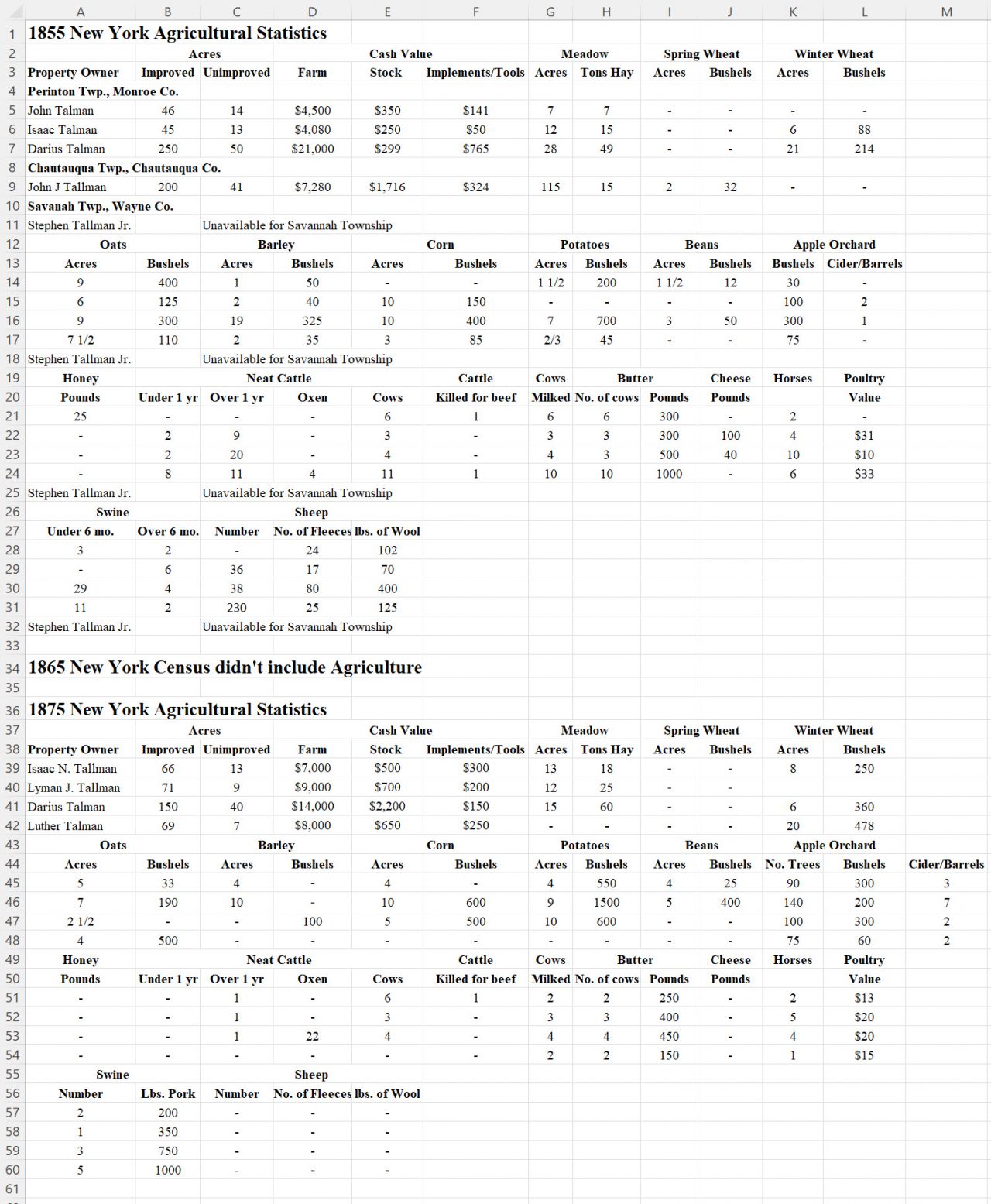
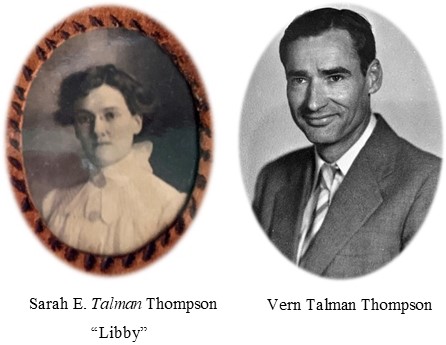
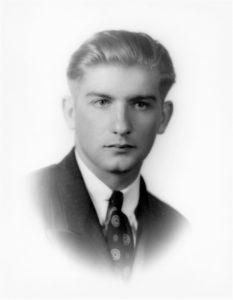 And now the story:
And now the story: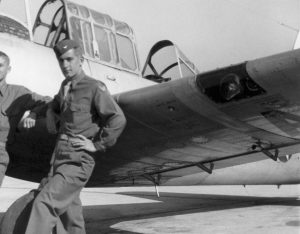
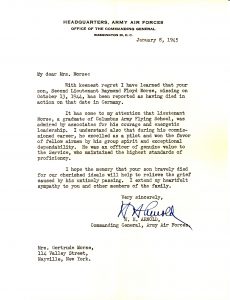
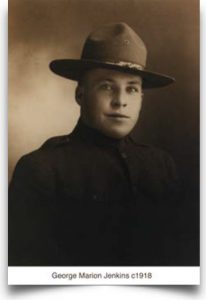
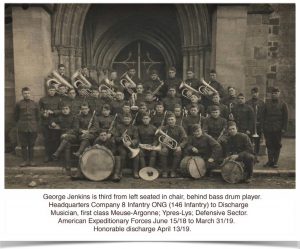
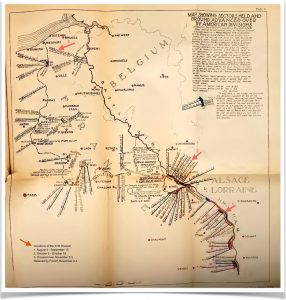
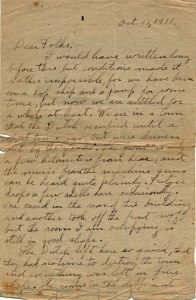
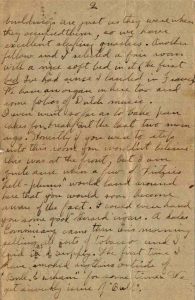
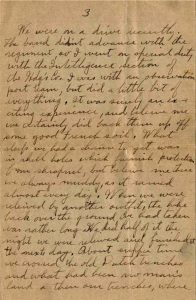
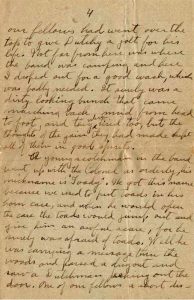
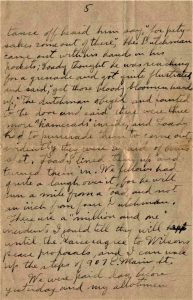
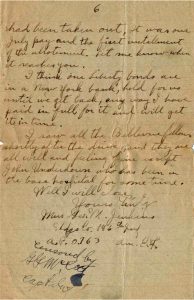
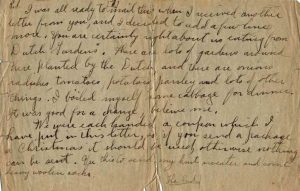
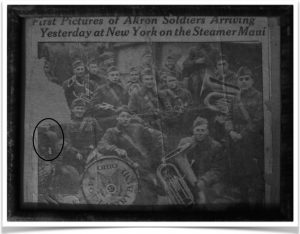
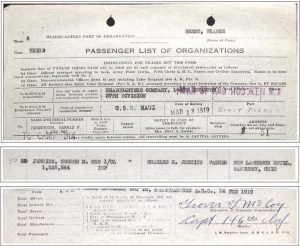
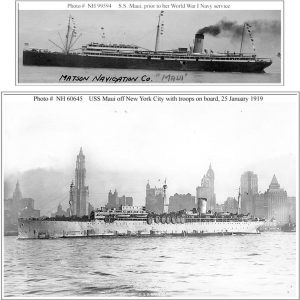
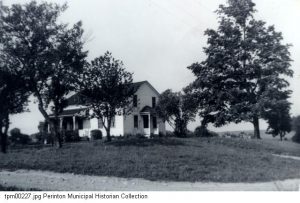 (1)
(1)